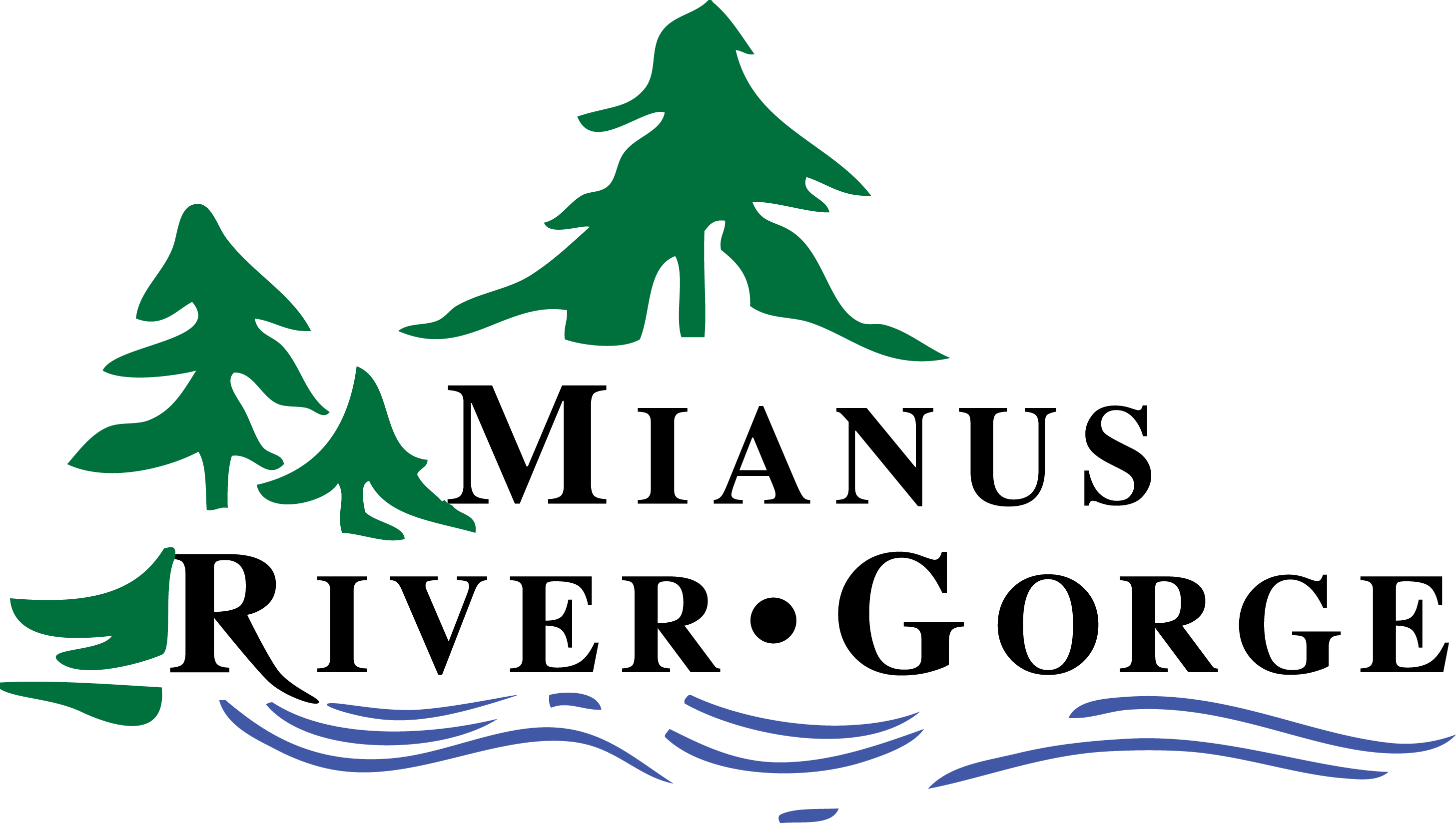A Fascination with Turtles
Rod Christie, Mianus River Gorge Executive Director
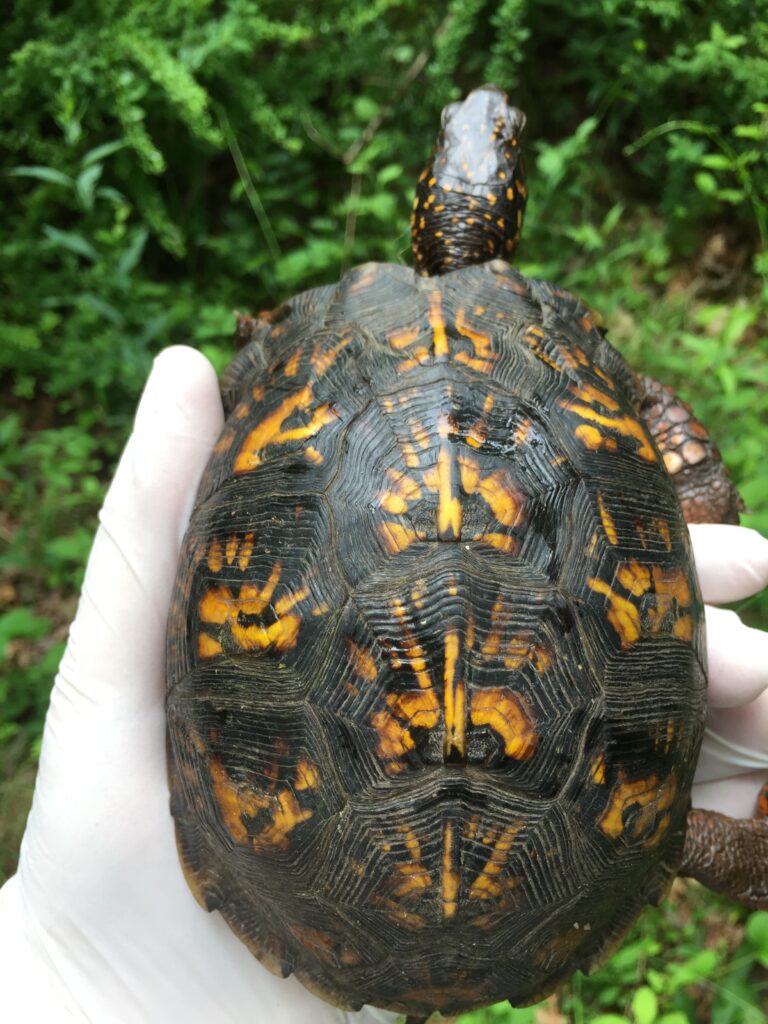
Ever since I was young, I have been captivated with all types of turtles. As a child I rescued baby turtles and raised them in my mother’s washroom sink, a large sink that could accommodate 30-40 baby turtles at a time. I have rehabbed injured diamondback terrapins by carefully epoxying their broken shells. I have helped relocate huge snapping turtles that were illegally collected and then confiscated from NYC restaurants, and I have sought out turtles wherever I go, whether it be turtles nesting on Costa Rica’s beaches or river turtles collected in Mexican villages for food.
I have a fondness for all turtles and their ability to survive in so many habitats from urban ponds to the open ocean, but two of my favorites are the eastern box turtle (which is really a tortoise and not a turtle) and the wood turtle. Maybe I like them because they are local and also becoming so rare, on the special concern list for New York State and declining nationally. Or it could be because they live so long. With their strong affinity to a specific home range there is the possibility of getting to know individuals over their lifespan. Whatever the reason, I continue to study these fascinating creatures in hopes of keeping them around for my children, their children, and beyond.
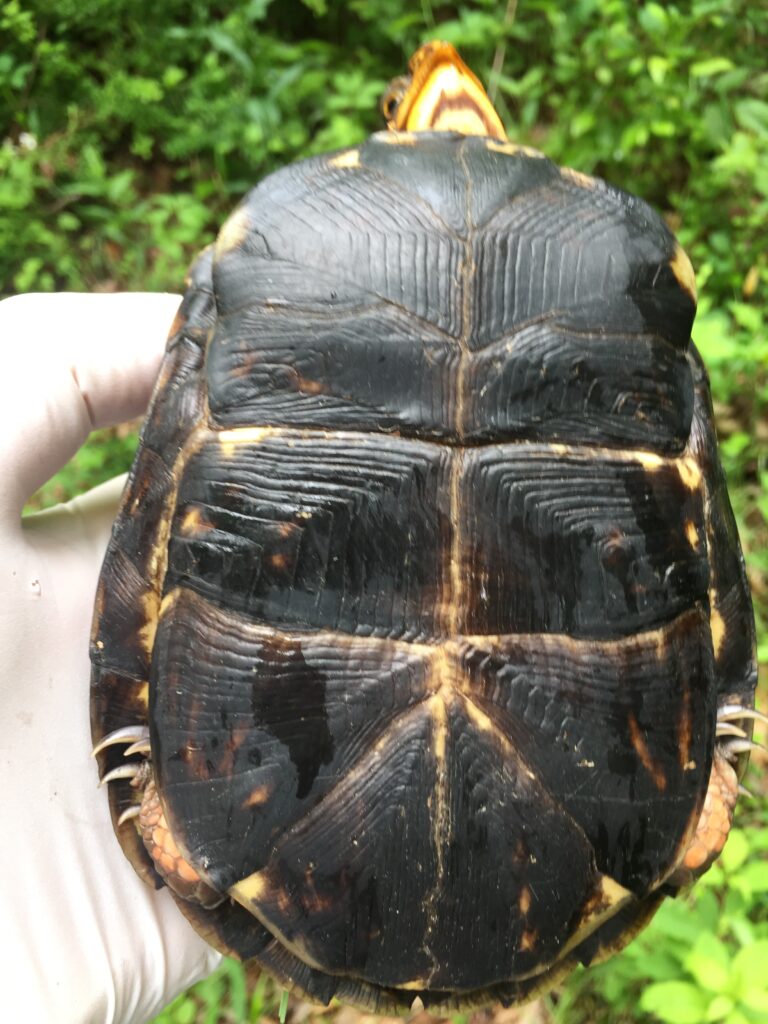
In recent years I have focused on surveying breeding populations of box turtles and wood turtles and, along with Mianus River Gorge staff, have experimented with strategies to prevent predation of nests. Populations in Westchester have been decimated by habitat loss and fragmentation; lack of protected nesting sites; and illegal collecting, much of it for the pet trade. The easy availability of turtles sold over the Internet or in trade magazines is a clear indication of the toll that poaching can potentially have on turtle populations. That said, some collecting may be unintentionally harmful, done by children or people that don’t understand the problems with taking a wild turtle out of its natural habitat and trying to make it a pet. Everyone should know that turtles are protected by law and if you do “borrow” one for a day or so you need to return it to the exact location where you found it (unless of course you found it crossing the road and then please put it on the side of the road in the direction it was headed.). If turtles are moved to a new location, they will search for their original home range, inevitably increasing their chance of getting killed.
Counting the exact number of turtles nesting in a certain area is often challenging due to the difficulty of identifying individual turtles. We have found that with box turtles using pattern recognition is comparatively easy. Each turtle has a unique set of markings on its carapace (top shell) and plastron (bottom shell). We are still not sure if these change over time, but it appears that the carapace markings are very consistent from year to year on older turtles (this may not hold with younger turtles since they are still growing rapidly). Using this technique, we can track individual turtles, which may help us assess the population and work on ways to increase it over time.
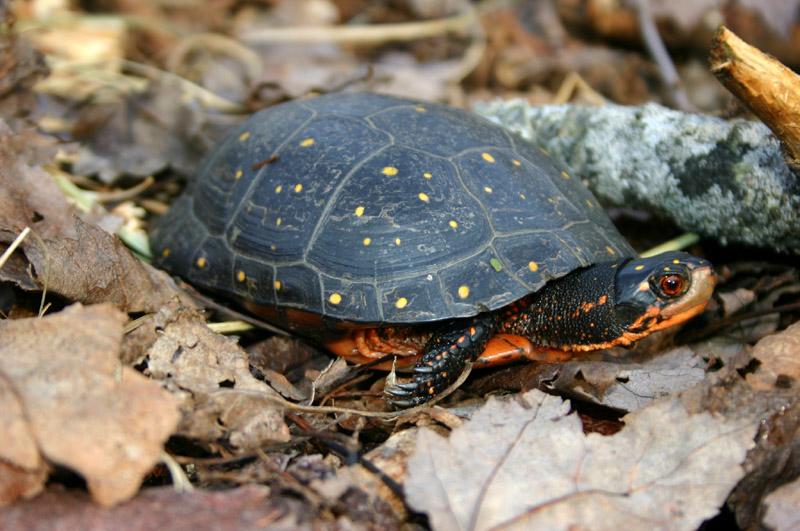
In addition to box and wood turtles there are a variety of turtles in this area that you may encounter. Some are more common like the painted turtles that are often seen basking on logs in area ponds. Farther south and in more urban areas there also may be red-eared sliders, an introduced species from the pet trade. Less noticeable turtles include the spotted turtle (also listed as special concern in NYS) and the musk turtle. The largest area freshwater turtle is the snapping turtle. Snapping turtles can be very aggressive, especially when on land. Snapping turtles are also one of the most adaptable turtles, living in almost all bodies of water from small streams to brackish coastal wetlands. I once saw a huge one, four feet head to tail, swimming in a saltmarsh. It was camouflaged with a forest of algae growing on its back. Mid to late June is the start of nesting season for these giants so you may see females crossing the roads or in your backyards as they search for a soft place to nest. Watching this process from a safe distance can be a fascinating event, and the emergence of the 30 or so young turtles three months later is equally exciting. Although many of the nests get raided by skunks, raccoons and opossums, eggs laid close to houses in garden beds are often successful as the regular disturbances make the nest stand out less.
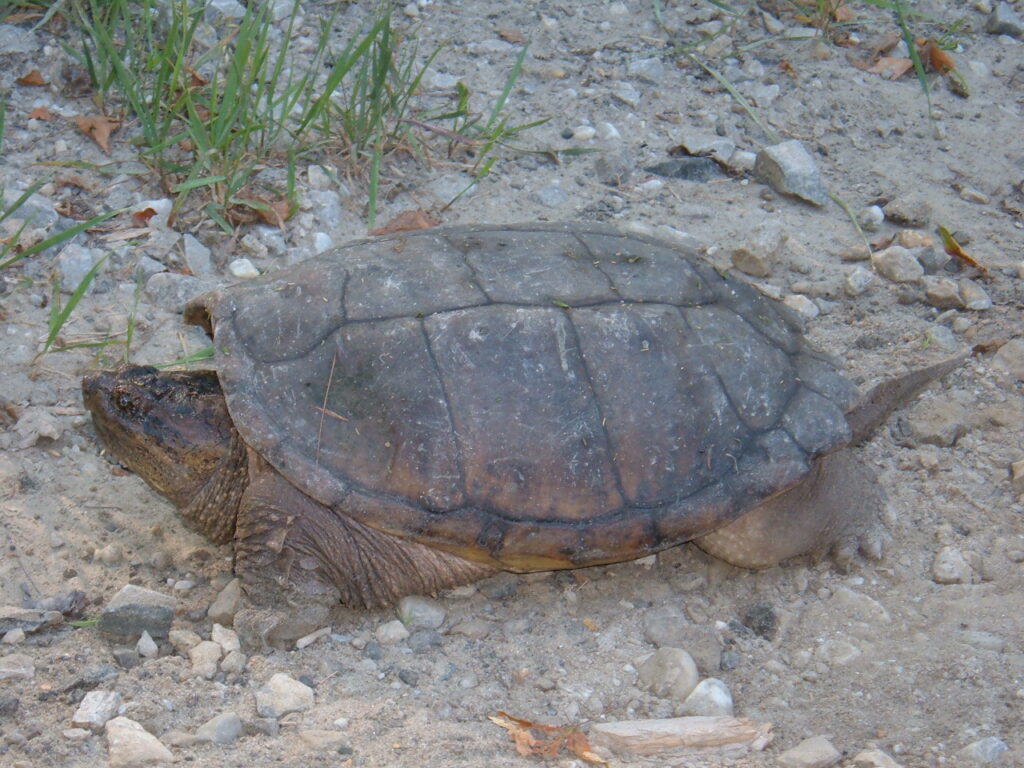
So the next time you see a turtle, especially if it is a box or wood turtle, enjoy watching it and don’t let anyone know it was there. If you see someone taking one of these turtles, please notify Mianus River Gorge or your local conservation officer and we will try to assist when possible.
